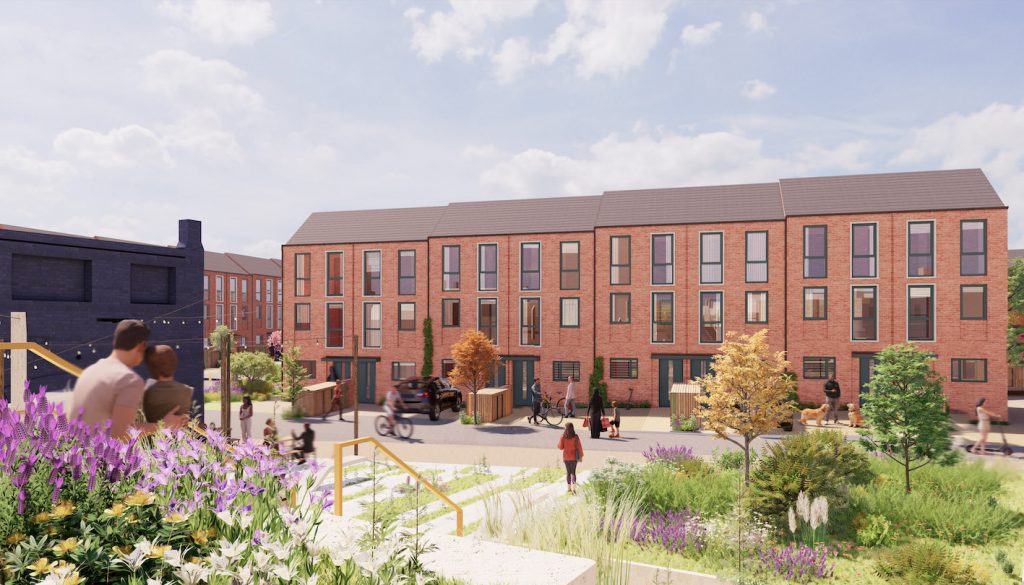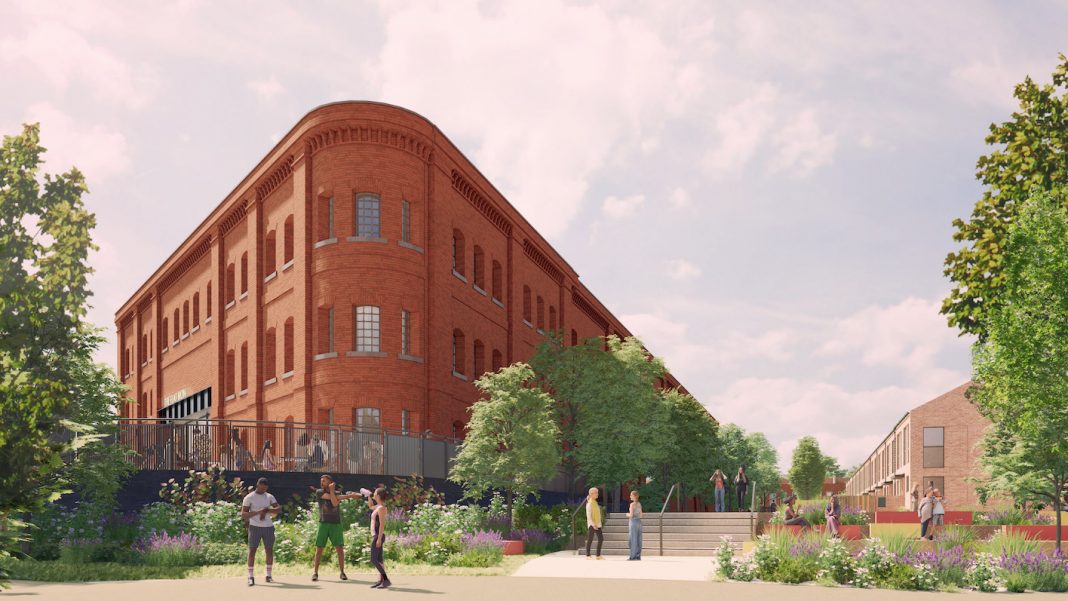Wavensmere Homes and Clowes Developments have submitted a full planning and listed building application to Derby City Council for the redevelopment of the city’s historic Friar Gate Goods Yard.
The detailed design proposal sets out the vision for the reanimation of two landmark Grade II listed buildings into over 110,000 sq ft of commercial space, with 276 new homes also planned for the 11.5-acre (4.96Ha) site.
A painstaking restoration of the 19th Century Bonded Warehouse and Engine House could deliver a total of 111,275 sq ft of flexible offices, health and fitness space, a restaurant/café, together with a regional sales centre for Birmingham-headquartered Wavensmere Homes.
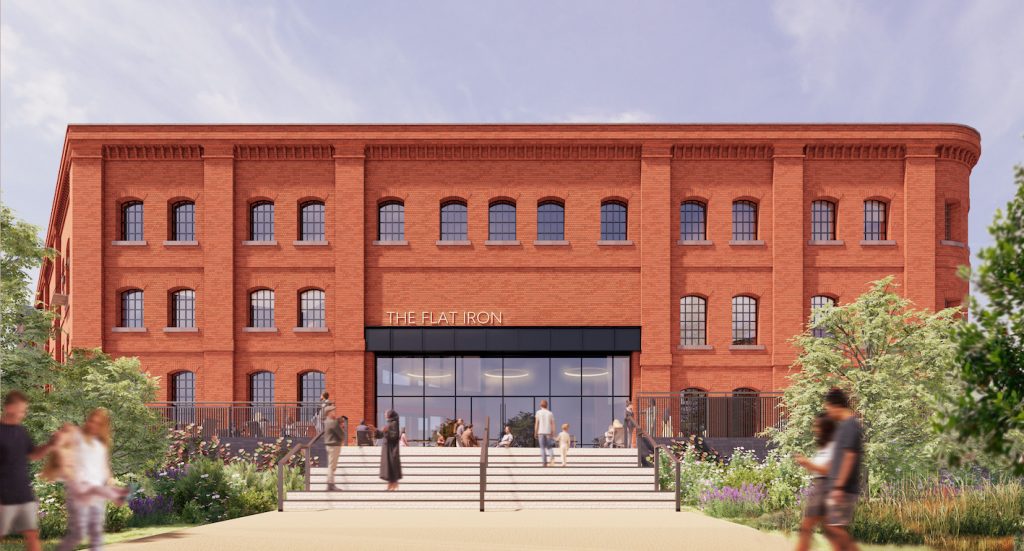
The plans also include extensive new areas of Public Open Space, including play spaces and pocket parks. A new multi-purpose public realm and community space is also proposed for the elevated area adjacent to Friar Gate Bridge, with retention of some of the original railway arch facades.
New vehicular, pedestrian and cycle access would be created at various points around the site, from Uttoxeter New Road, Great Northern Way, and Friar Gate, with the Mick Mack cycling route also extended.
Friar Gate Goods Yard has been in the ownership of the Clowes family for over 40 years, with a number of options for redevelopment proposed but not progressed, due to heritage constraints and commercial viability. Wavensmere Homes and Clowes developments have worked with Glancy Nicholls Architects and Pegasus Group to incorporate the views from over 200 local public consultation responses into the plans for the redevelopment of the derelict site.
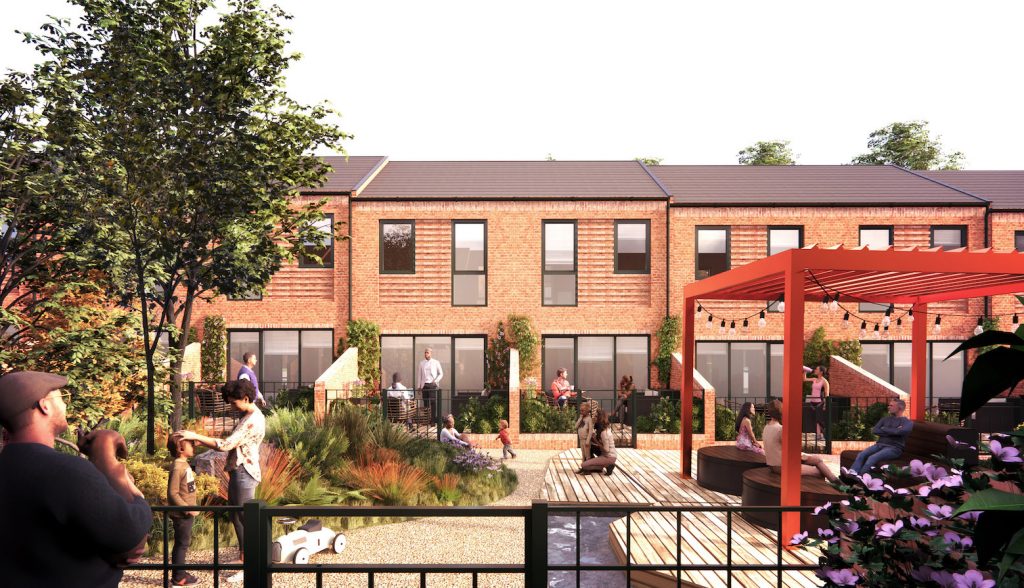
James Dickens, Managing Director of Wavensmere Homes, said: “This is the most comprehensive planning application we have ever submitted. We have fully 3D modelled the entirety of the 19th Century Bonded Warehouse and Engine House, which has enabled us to present how the buildings could be carefully brought back to life.
“The context of the new homes and several acres of new Public Open Space are also fully illustrated. The opportunity to work collaboratively to reanimate this landmark city centre site is an honour and the plans showcase our vision, fine attention to detail, and bold investment into this nationally important regeneration project.
“When we first revealed our indicative plans during the public consultation process, we received a pleasing amount of interest from prospective operators of the health and fitness centre, office space, and the restaurant/café – all of which will be within the Bonded Warehouse.
“We also have a database of over 500 prospective purchasers wishing to buy one of the townhouses, indicating the pent-up demand and appeal. We look forward to continuing to work with Derby City Council’s Officers, Councillors, and wider stakeholders, as this planning application is considered.”
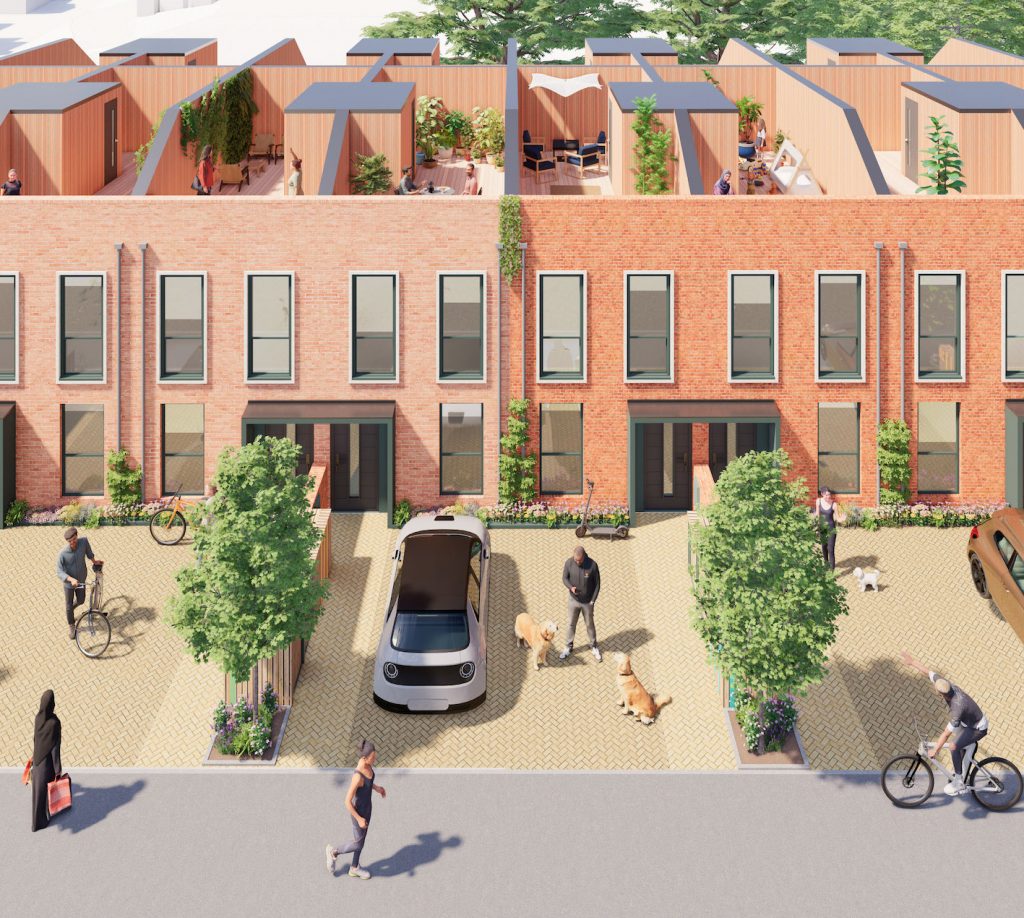
Adam McPartland, Director of Glancy Nicholls Architects, said: “The Friar Gate Goods Yard redevelopment plans illustrate the millions of pounds that need to be invested into saving these distressed 150-year-old listed buildings. Glancy Nicholls Architects has brought its expertise in restoration and retrofit design to sustainably restore two of Derby city centre’s most notable historic structures, providing a vibrant new chapter of their story.
“The overarching brief from Wavensmere Homes was for a huge emphasis to be placed on exemplary placemaking. By having a mix of commercial uses within the two buildings – and opening the inaccessible site up to create a series of new linear parks – it could enable hundreds of people to appreciate these heritage assets on a daily basis.
“In addition to the proposals for the listed buildings, the designs for the 227 two- and three-bedroom townhouses are bespoke. Curved and terraced street scenes celebrate the beauty and vista of the Bonded Warehouse, while incorporating a range of energy saving technologies and strategies.
“We have also proposed a four-storey apartment building containing 49 apartments to reinstate the lost streetscape of the Stafford Street frontage. The highest EPC rating of A is being targeted for the new homes and commercial space to keep energy consumption and carbon emissions to a minimum.”
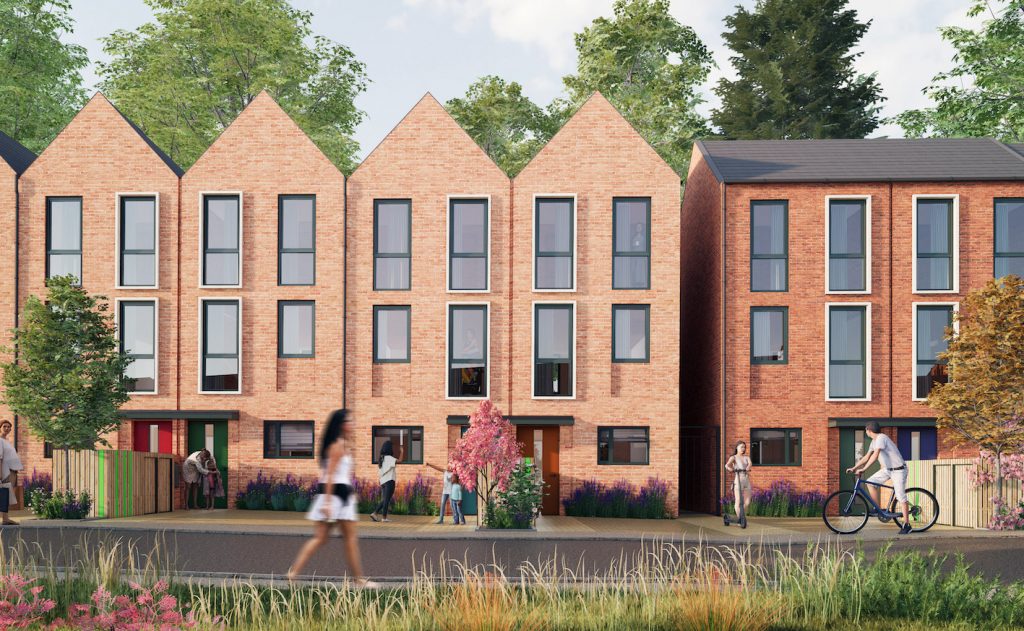
The site sits just outside the Friar Gate Conservation Area, which features notable Georgian townhouses with high-quality brickwork and fine architectural detailing. The Friar Gate Goods Yard was intended as the main goods depot for the Great Northern Railway line, to handle coal, livestock, timber, and metals.
Designed in 1870, and entering operation in 1878, the Bonded Warehouse building contained extensive warehouse space and offices. It was used as a store for the American Army in WWII to house ammunition and other supplies.
The Engine House was also built for the Railway by Kirk & Randall of Sleaford. It is Italianate in style and built from Welsh slate roofs. The Engine House supplied power to the hydraulic lifts and capstans at the Bonded Warehouse.
The site first became derelict in 1967, and over time became overgrown and fell into a poor state of repair. An arson attack took place at the Goods Yard in 2020, which exposed the whole inner iron structure of the two historic buildings.
